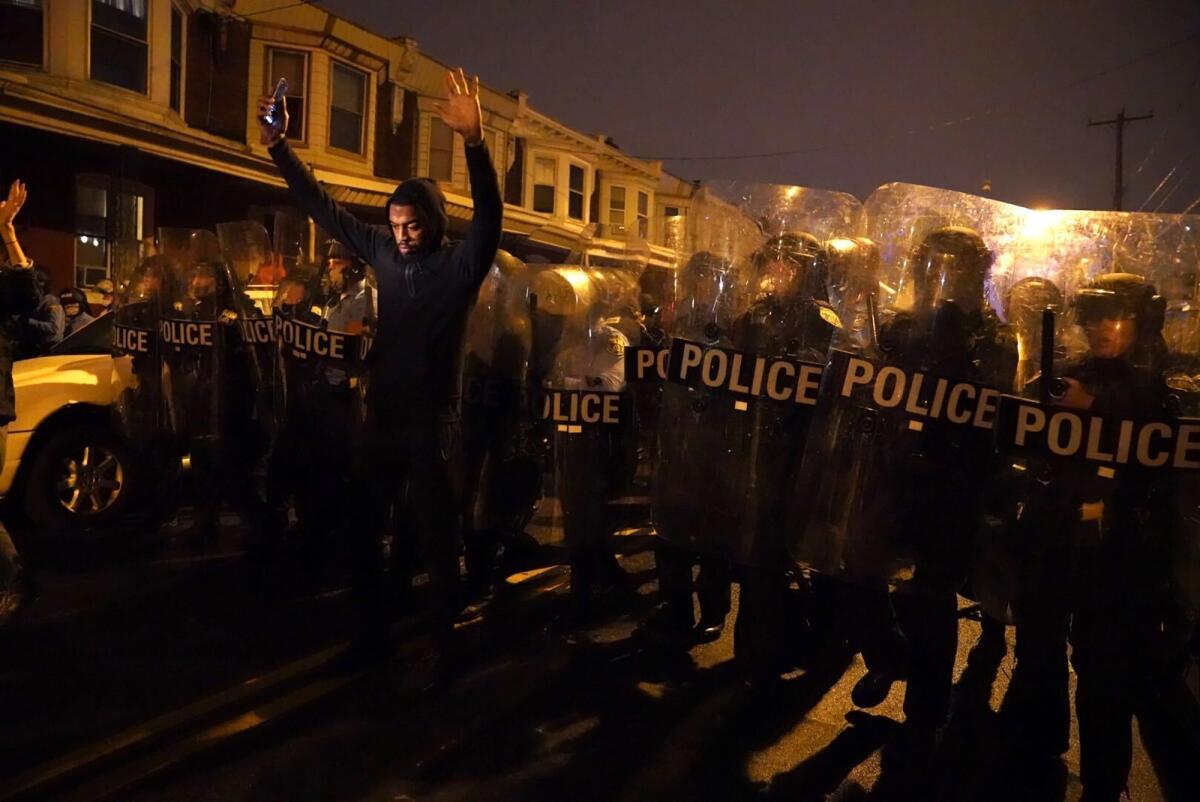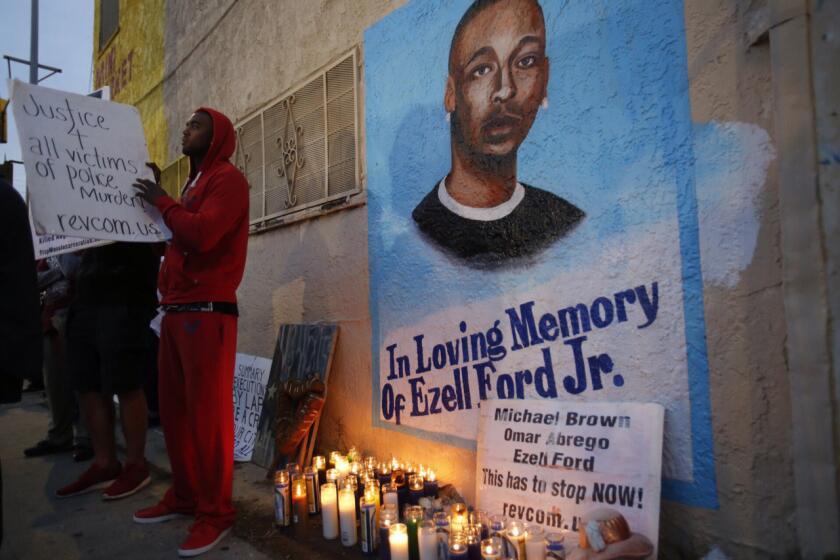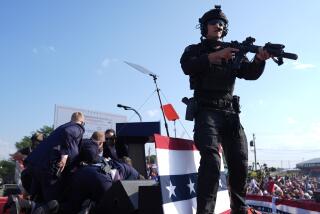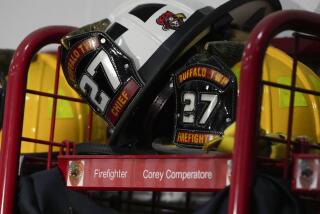Family of man fatally shot by Philadelphia police sought an ambulance, not police

PHILADELPHIA — The family of a Black man killed when Philadelphia police officers fired a dozen rounds in a shooting caught on video had called for an ambulance to get him help with a mental health crisis, not for police intervention, their lawyer said Tuesday.
Police said Walter Wallace Jr., 27, was wielding a knife and ignored orders to drop the weapon before officers fired shots Monday afternoon. But his parents said at a news conference Tuesday night that officers knew their son was having a mental health crisis because they had been to the family’s house three times Monday.
Cathy Wallace, his mother, said that one of those times, “they stood there and laughed at us.”
The family’s attorney, Shaka Johnson, said Wallace’s wife was pregnant and was scheduled to have labor induced Wednesday. Johnson said Wallace had nine children, two of whom spoke briefly at Tuesday night’s news conference.
“When you come to a scene where somebody is in a mental crisis, and the only tool you have to deal with it is a gun ... where are the proper tools for the job?” Johnson said, arguing that Philadelphia police officers were not properly trained to handle mental health crises. Johnson said Wallace’s brother had called 911 to request medical assistance and an ambulance.
About 500 people gathered at a West Philadelphia park Tuesday night and began marching through the neighborhood, chanting. There were sporadic reports of arrests in other areas of the city.
Video showed people streaming into stores and stealing goods as they left on the opposite side of the city from where Wallace was shot. The Philadelphia Office of Emergency Management, in a tweet about 9:30 p.m. Tuesday, cautioned residents in eastern Philadelphia to remain indoors.
Philadelphia officials had anticipated a second night of unrest Tuesday, and a Pennsylvania National Guard spokesperson told the Philadelphia Inquirer that several hundred guardsmen were expected to arrive in the city within 24 to 48 hours.
Chief Police Inspector Frank Vanore said earlier at a news conference that police had received a call Monday about a man screaming and that he was armed with a knife.
The two officers each fired at least seven rounds — at least 14 total shots — but could not say how many times Wallace, 27, was struck.
Wallace’s father, Walter Wallace Sr., earlier told the Inquirer that his son was on medication and struggled with his mental health.
Surely we can demand better of our police than the plethora of killings of African Americans.
“Why didn’t they use a Taser?” he asked.
The officers had not been interviewed as of Tuesday afternoon, Police Commissioner Danielle Outlaw said. She said the officers’ names and other identifying information, including their race, would be withheld per department policy until the department could be sure releasing the information would not pose a threat to their safety. Neither officer had a Taser or similar device, Outlaw said, adding that the department has previously asked for funding to equip more officers with those devices.
Wallace was shot before 4 p.m. Monday in an episode filmed by a bystander and posted on social media. Witnesses complained that police fired excessive shots.
Police arrested at least 91 people during unrest Monday night and Tuesday morning, with three people cited for failing to disperse and about a dozen charged with assault of an officer. Police had previously said 30 officers were injured in the unrest, most of them hit with thrown objects including bricks. One officer was still hospitalized Tuesday with a broken leg after being purposely run over by a pickup truck, police said.
Officials with the Fraternal Order of Police, the union representing officers in Philadelphia, said the officer injuries were unacceptable and called for public patience as the investigation into the shooting continued.
Officers said they found Wallace holding a knife and ordered him to drop the weapon several times. Wallace advanced toward the officers, who fired several times, said Officer Tanya Little, a police spokesperson.
In the video, a woman and at least one man are seen following Wallace, trying to get him to listen to officers, as he briskly walks across the street and between cars. The woman, identified by family members as Wallace’s mother, screams and throws something at an officer after her son is shot and falls to the ground.
The video does not make clear whether he was holding a knife, but witnesses said he was.
Wallace was hit in the shoulder and chest, Little said. One of the officers drove him to a hospital, where he was pronounced dead a short time later, she said.
No officers or bystanders were injured in the initial confrontation, Little said. Both were wearing body cameras and were taken off street duty during the investigation.
Outlaw and other city officials said police were stationing extra officers on business corridors in West Philadelphia and elsewhere in preparation for more unrest.
Outlaw said earlier Tuesday that she had requested aid from neighboring counties as well as the National Guard. Mayor Jim Kenney had said the city had been in talks with the state about possible National Guard help related to elections, but a spokesperson for the Guard told the Inquirer that their presence would be related to the unrest.
About 1 in 1,000 black men and boys in America can expect to die at the hands of police. That risk is 2.5 times higher than for white men, new research shows.
Hundreds of people took to the streets in West Philadelphia on Monday night and into the early hours of Tuesday, with interactions between protesters and police turning violent at times, the Inquirer reported. Video showed many protesters yelling at officers and crying.
Dozens of protesters gathered at a nearby park, chanting, “Black lives matter.” Police cars and dumpsters were set on fire as officers struggled to contain the crowds. More than a dozen officers, many with batons in hand, formed a line as they ran down 52nd Street, dispersing most of the crowd.
The 52nd Street corridor was also the site of protests against police brutality at the end of May, after George Floyd was killed by Minneapolis police. Those protests have been the subject of City Council hearings, with protesters describing harsh and unnecessary tactics, including tear gas and projectiles fired by police.
More to Read
Sign up for Essential California
The most important California stories and recommendations in your inbox every morning.
You may occasionally receive promotional content from the Los Angeles Times.











